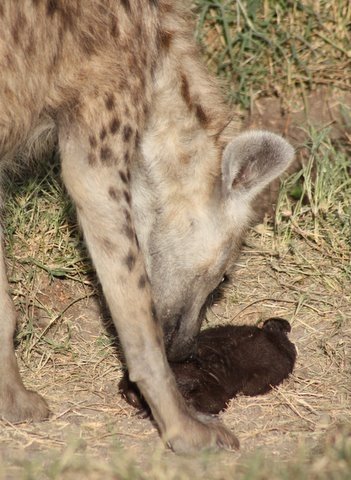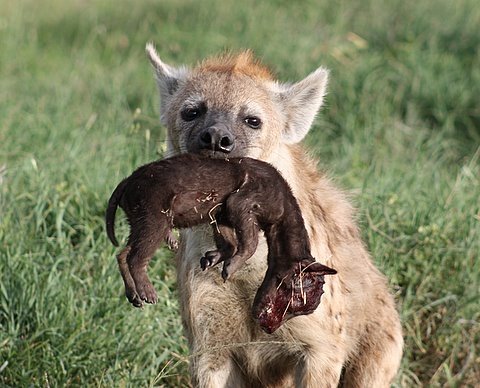|
Author: Kate It's sad when any hyena dies. It's even worse when it's a hyena you're particularly fond of. It's hardest of all when it's a tiny cub. Last night, we came upon what originally seemed like an idyllic scene at the Happy Zebra den. Sawtooth - one of my favorite hyenas - was grooming her tiny black cub Neverland, who was born fewer than 20 days ago. The cub, however, wasn’t moving. We could see that his head was covered in blood. After the vigorous bath didn’t breathe life into Neverland, Sawtooth stood over her motionless cub, looking confused. Several minutes later, she lay down in the denhole, just a meter or so from Neverland's body. None of the other hyenas at the den seemed to understand why the cub was so very still. Over the next hour, several of them came over to sniff and prod the dead cub. Snapper, a Happy Zebra subadult, even picked Neverland up and carried him around for a while before she lost interest, placing him carefully back where she had found him. Our necropsy showed that Neverland had died from massive head trauma just an hour or two before we arrived at the den. His entire skull and jaw had been crushed. While adult hyenas have extremely robust skulls, a young cub's skull still has a lot of developing left to do, and is surprisingly fragile.
2 Comments
Your comment will be posted after it is approved.
Leave a Reply. |
About
Notes From Kenya is a blog run by the students in the Holekamp Lab at Michigan State University, College of Natural Science, East Lansing, Michigan, U.S.A. Archives
July 2020
Categories |


 RSS Feed
RSS Feed